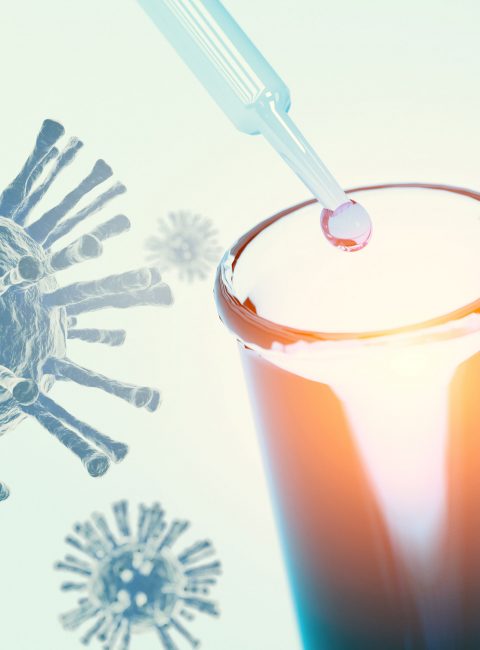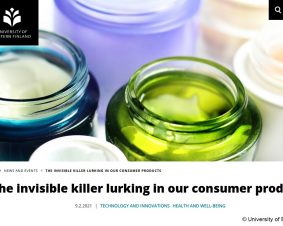 >
Spotlight March 2021: Is Nanotechnology the Swiss Army Knife against Future Pandemics?
>
Spotlight March 2021: Is Nanotechnology the Swiss Army Knife against Future Pandemics?
The COVID 19 outbreak has led to a fundamental rethinking of existing approaches to diagnosis, treatment, and prevention methods. The need for better and more efficient concepts is global and urgent. Nanotechnology has long been at the forefront of innovation and has led to advances in many different disciplines. Could this interdisciplinary field help develop a more comprehensive approach to combating COVID-19 as well as future pandemics?
This review published in the journal ACS NANO provides a general introduction to the novel coronavirus (SARS-CoV-2), the progression of the coronavirus disease 2019 (COVID-19) along with an overview of current vaccines. Additionally, some of the attempts to stop the first interaction of the virus with the target cells as well as preventing life-threatening processes are illustrated in detail. In this context, the interdisciplinary authors present and discuss several potential advantages of nanotechnology and the critical role it could have in the fight against COVID-19 and future pandemics both inside and outside the host. The authors highlight the multifunctional solutions offered by materials in the nanoscale e.g., by combining diagnostic and therapeutic into one. These nanotechnology-based-systems can increase the specificity and therefore the efficiency of immunosuppressant delivery to targeted cells resulting in a reduction of drug dose and drug distribution to nontarget organs. The authors also explain in detail the multiple ways, nanomaterials can assist vaccines or immunization research for example by boosting the upregulation required by the immune system or redirecting the immune response against antigens. Nanotechnology may similarly offer pathways to slow the spread of COVID-19; in this review, the development of self-disinfecting surfaces that would avoid contamination at hospitals or homes is also presented. Finally, to highlight the multifunctionality of nanomaterials, the authors examine how nanotechnology-based solutions could increase the safety of air-filtering devices such as masks.
Those interested in a more detailed description of emerging nanoscale materials or examples can read them in the original publication:
Weiss, C., Carriere, M., Fusco, L., Capua, I., Regla-Nava, J.A., Pasquali, M., Scott, J.A., Vitale, F., Unal, M.A., Mattevi, C. and Bedognetti, D., 2020. Toward nanotechnology-enabled approaches against the COVID-19 pandemic. ACS nano, 14(6), pp.6383-6406. DOI: 10.1021/acsnano.0c03697

Weitere Spotlights
Spotlight May 2023: Dual energy – edible batteries
An Italian research group reports on edible batteries that supply electric current and can be digested as food, thus providing energy a second time. What sounds funny at first has a serious background, because in medicine, power sources are needed that could be transported through the digestive tract and possibly remain in the body unintentionally, […]
Read moreSpotlight November 2022: Photonics in nature and bioinspired designs
Science has always taken nature as a model and imitated it. If you look at the field of photonics, i.e. the use of optical technologies for information processing, transmission or storage, the colorful examples in the animal and plant world are perfect basic drawers for technical applications. While colors in nature are used either for […]
Read moreSpotlight March 2023: How can photovoltaics be made safe and sustainable?
Conventional photovoltaic systems often have only low efficiency, i.e. only a fraction of the solar energy is converted into electrical energy and made usable. For this reason, research is being conducted into innovative materials that can significantly increase the energy yield and thus also enable more electrical energy to be generated from renewable sources. However, […]
Read moreSpotlight April 2021: Nanomaterials and Fake News – a commentary based on an example
In February 2021, the article “The invisible killer lurking in our consumer products” appeared, describing nanoparticles as a greater danger than Corona [1]. “The use of nanomaterials” would be “unregulated” and “nanomaterials are so small that they cannot be determined once they are part of a product”. So what is the truth of these statements? […]
Read more


